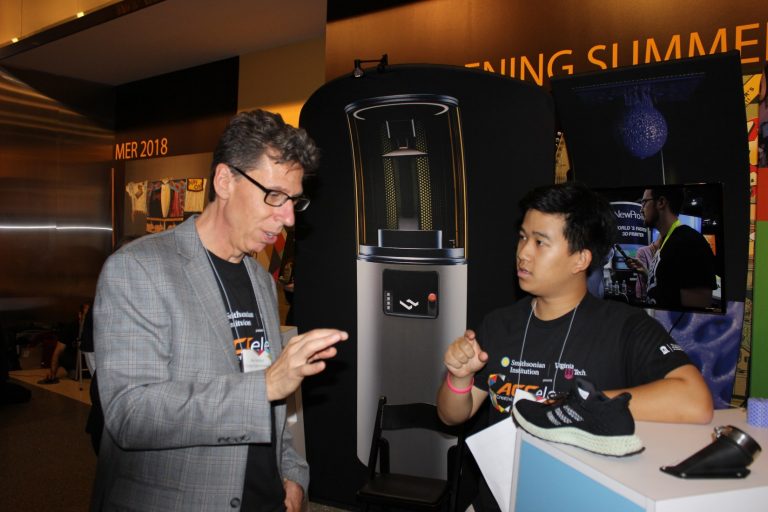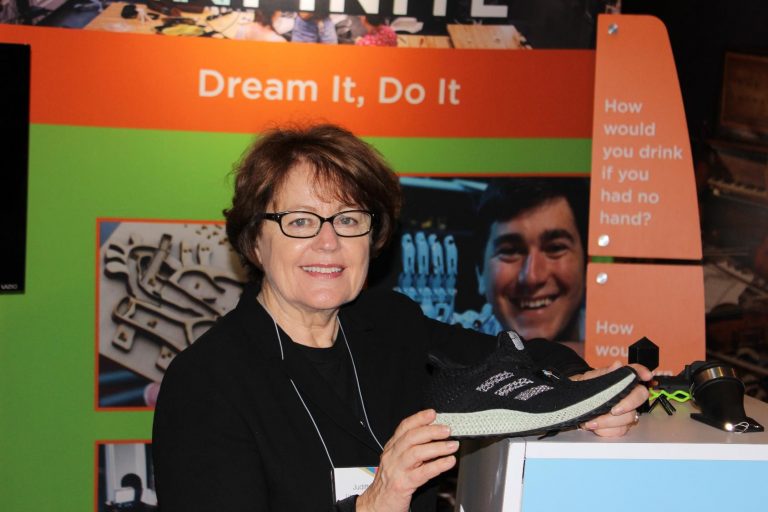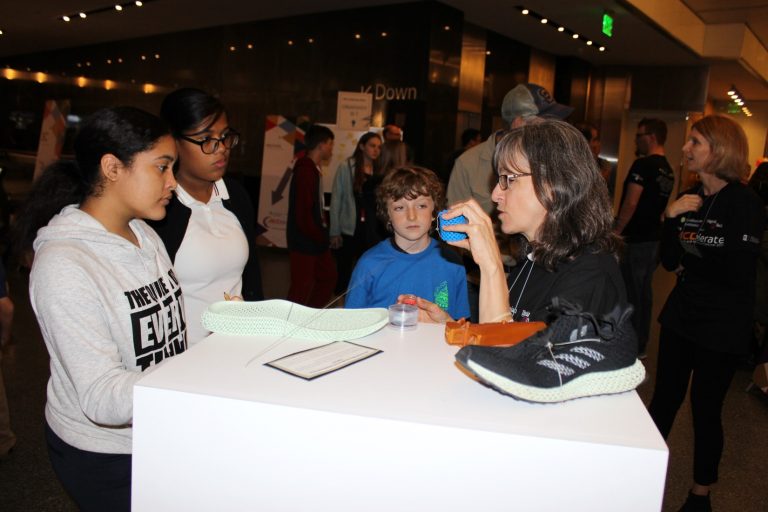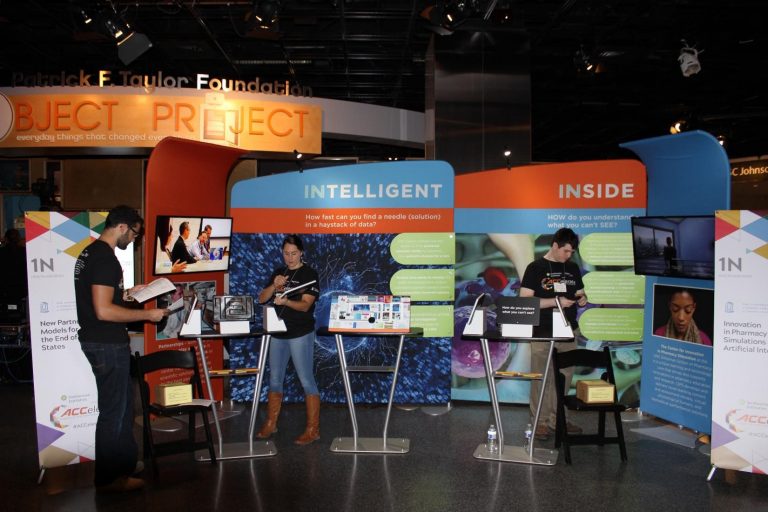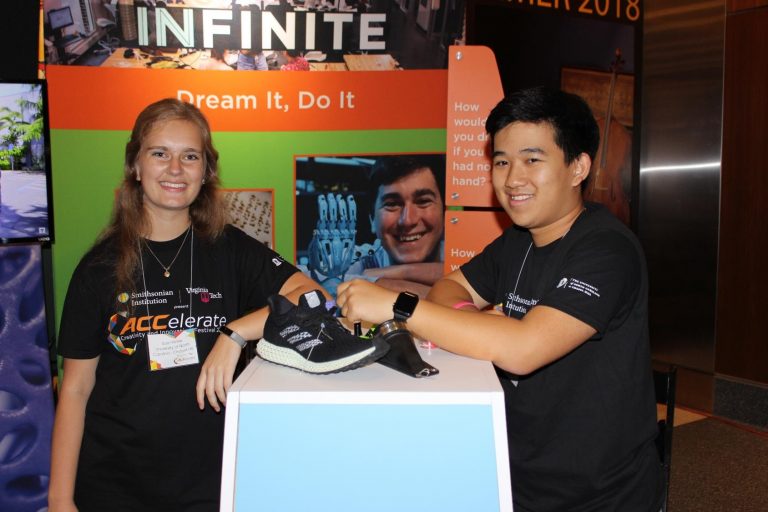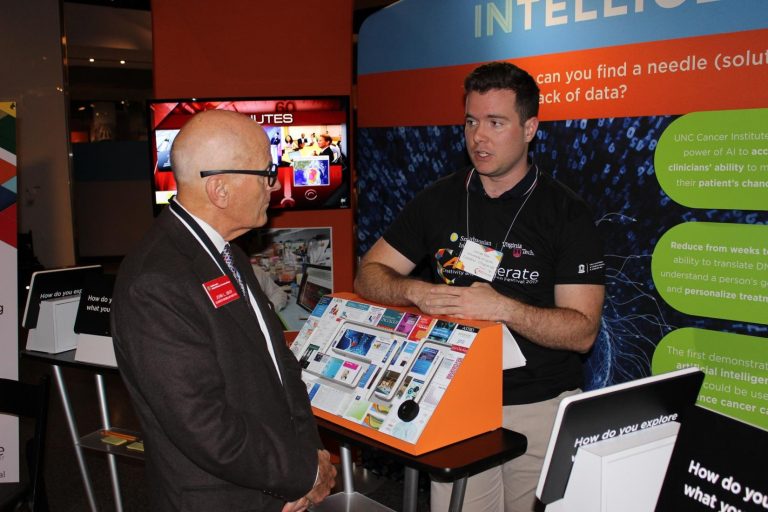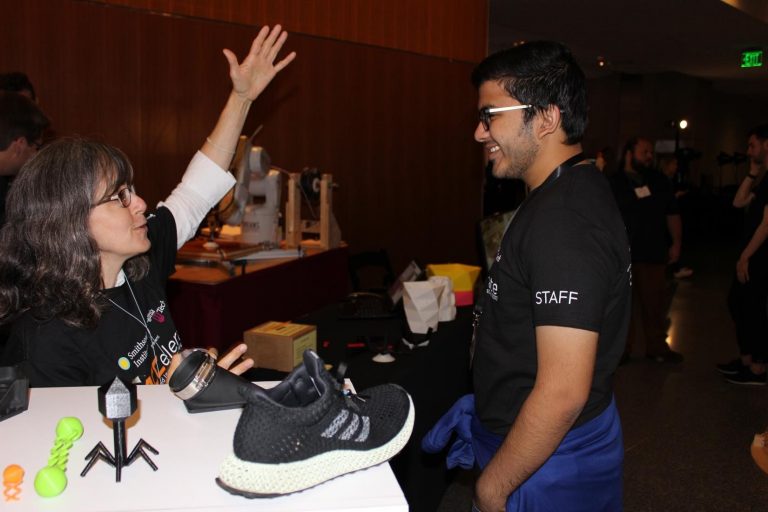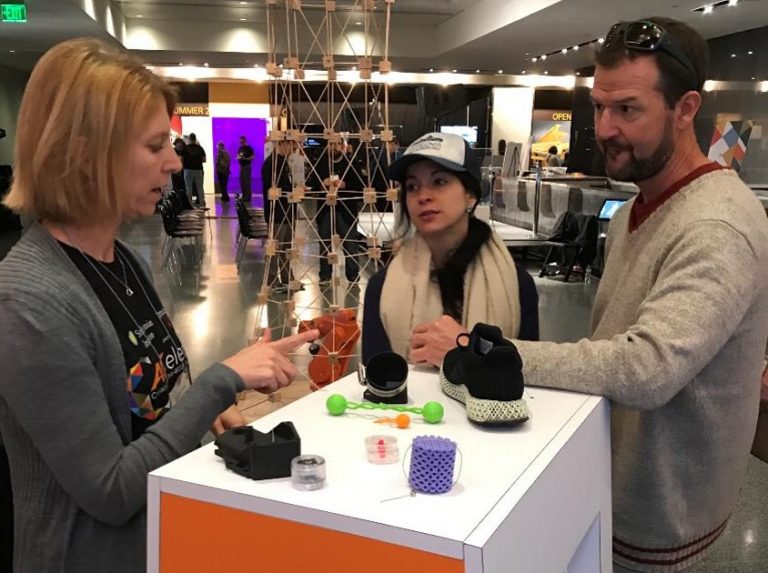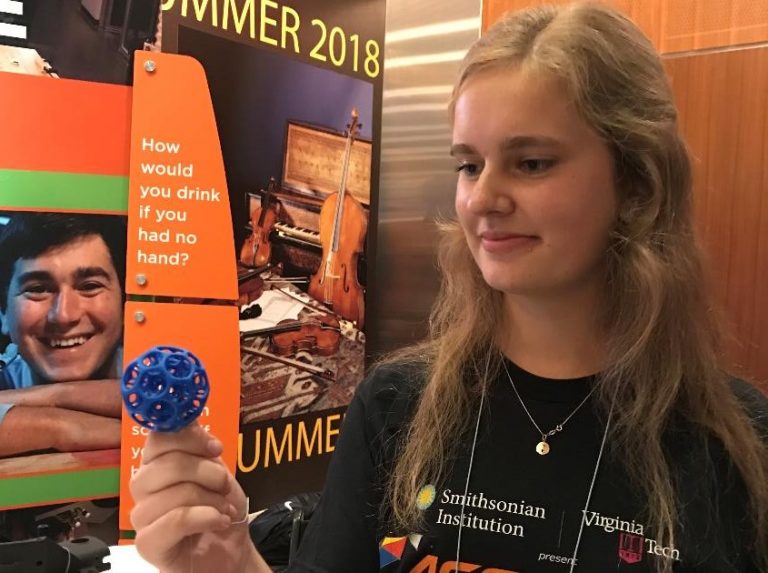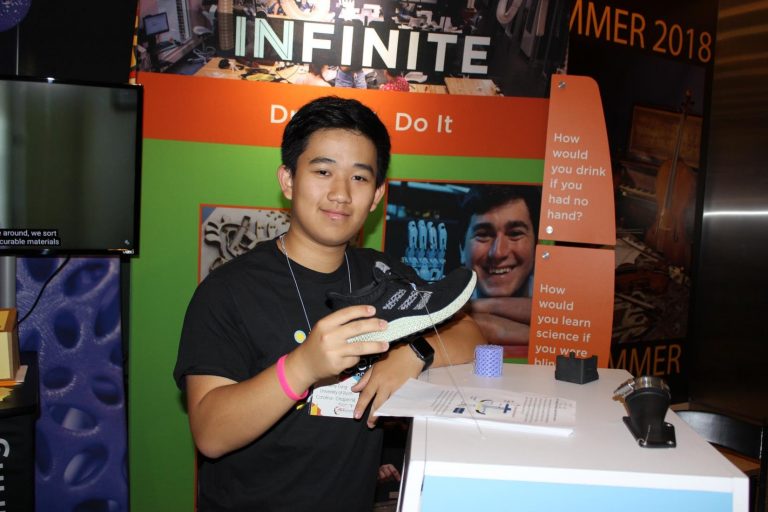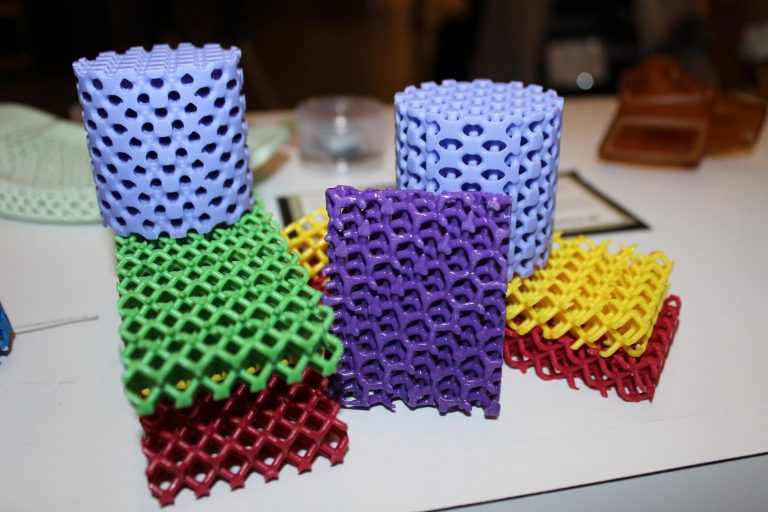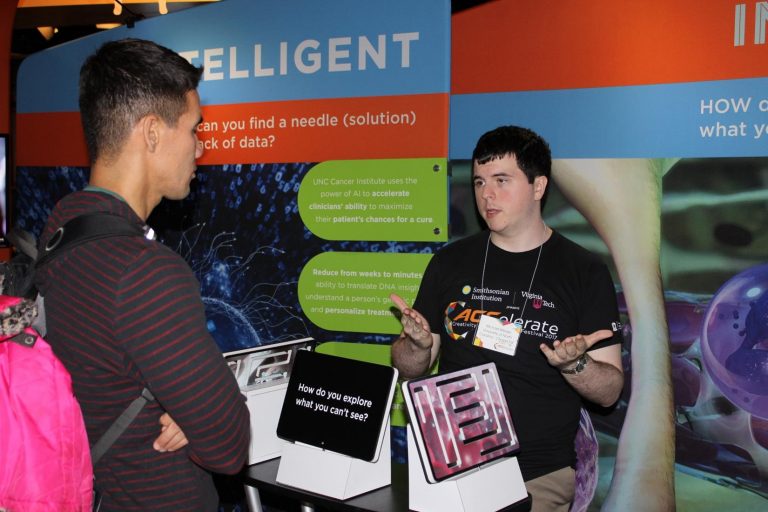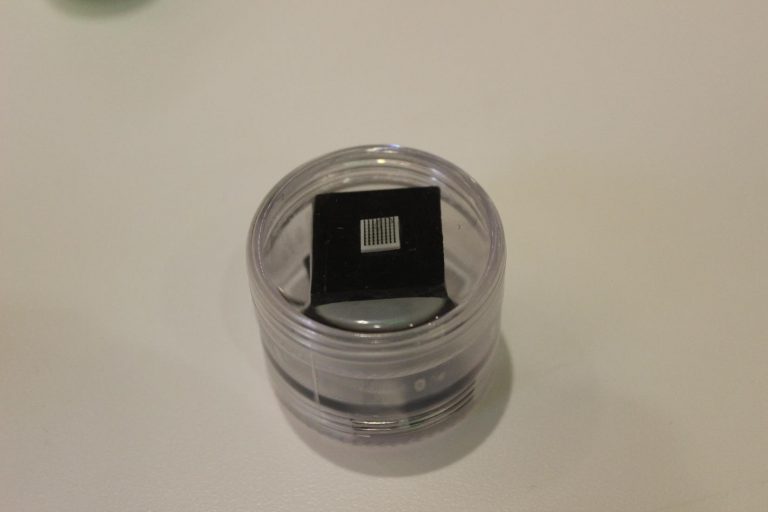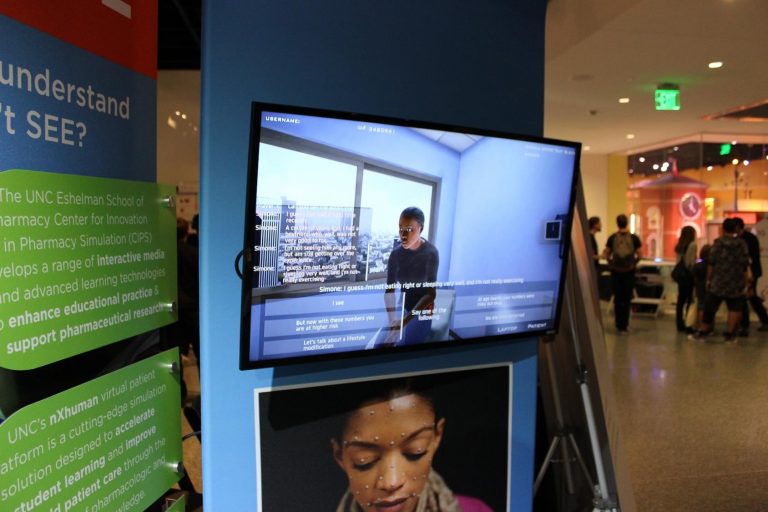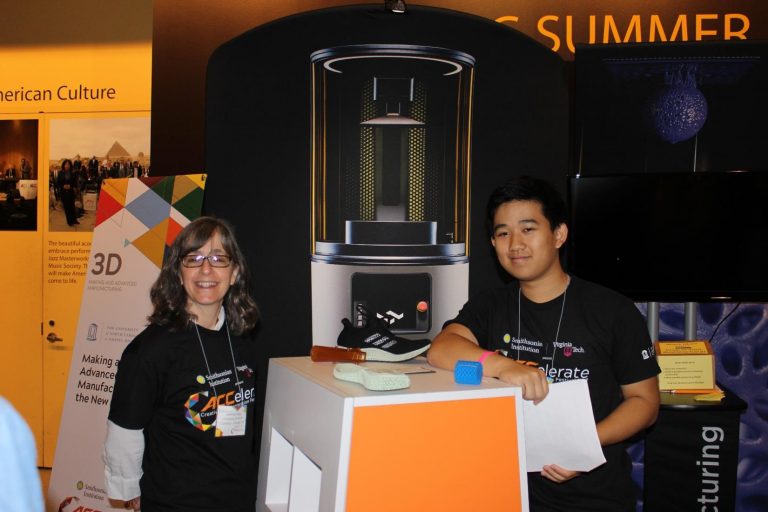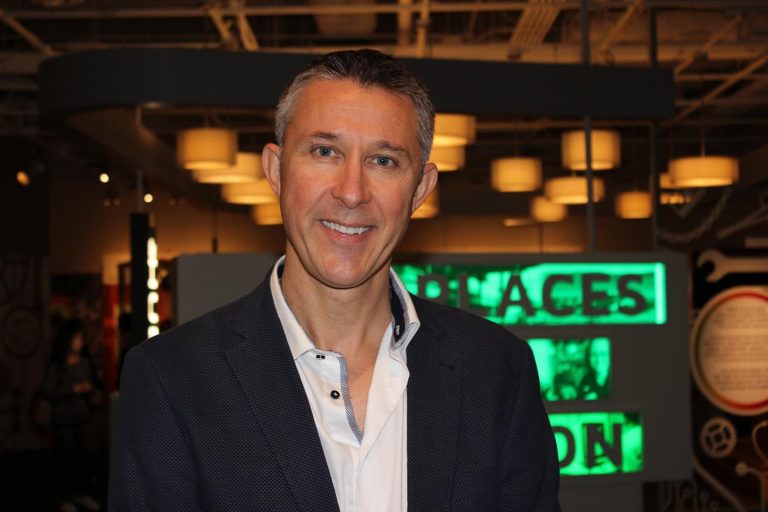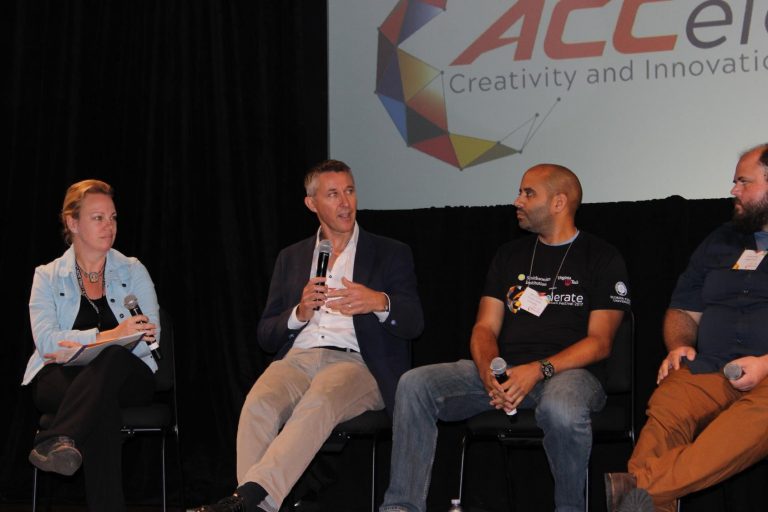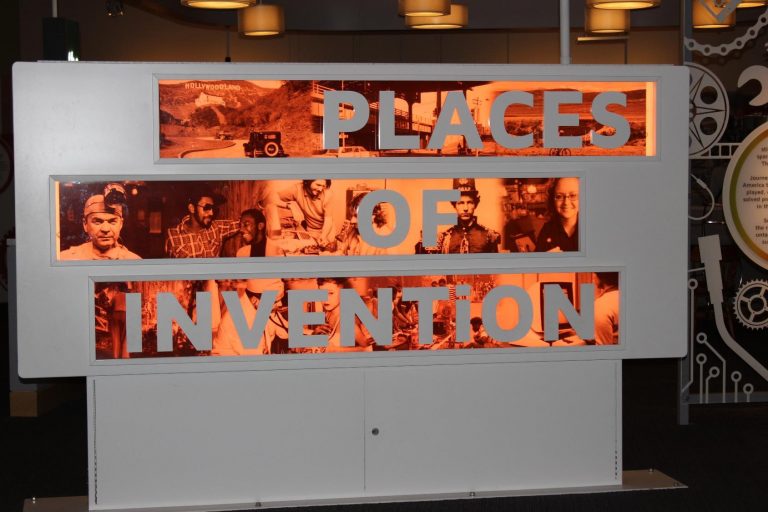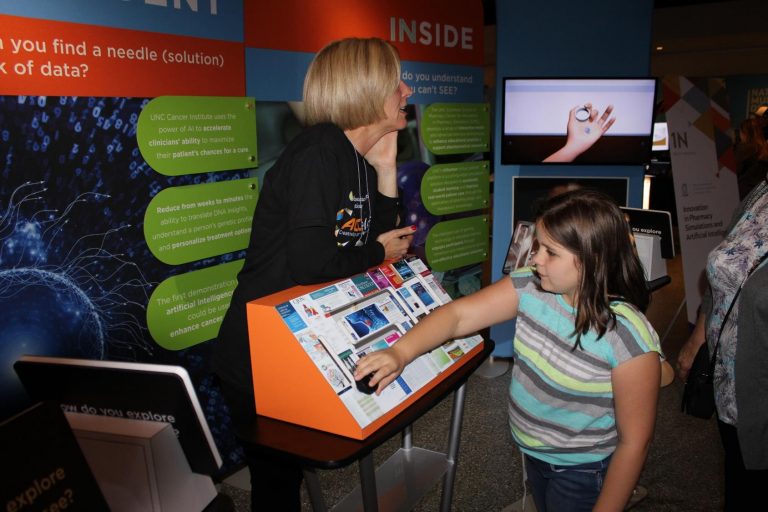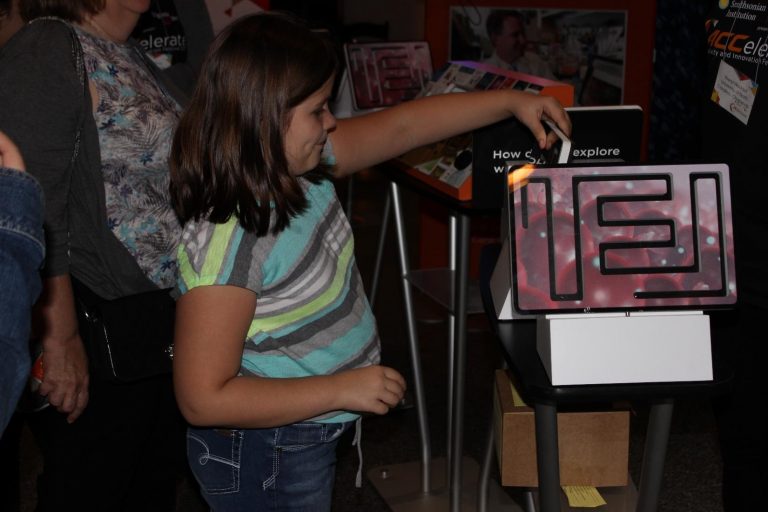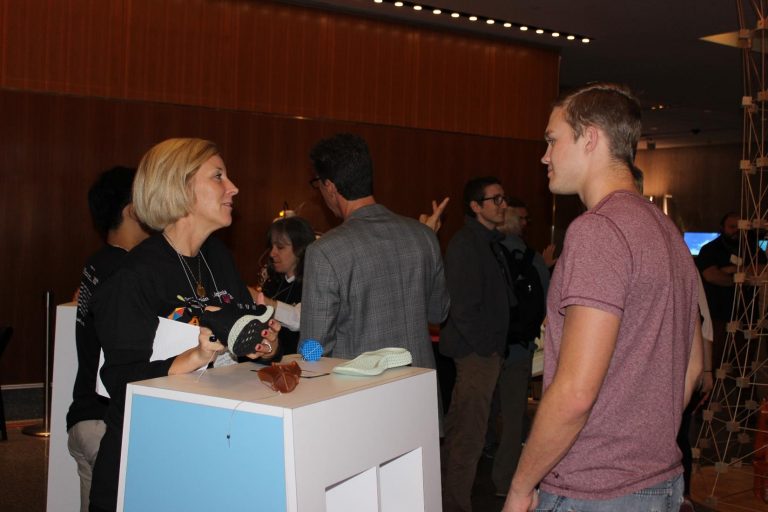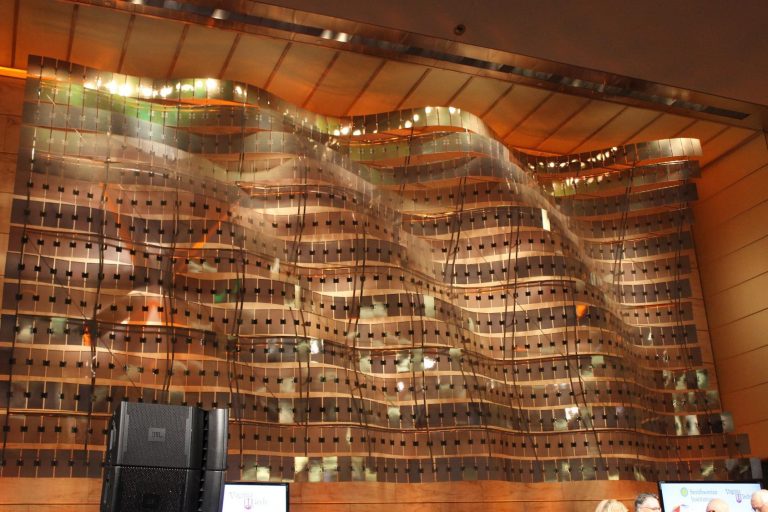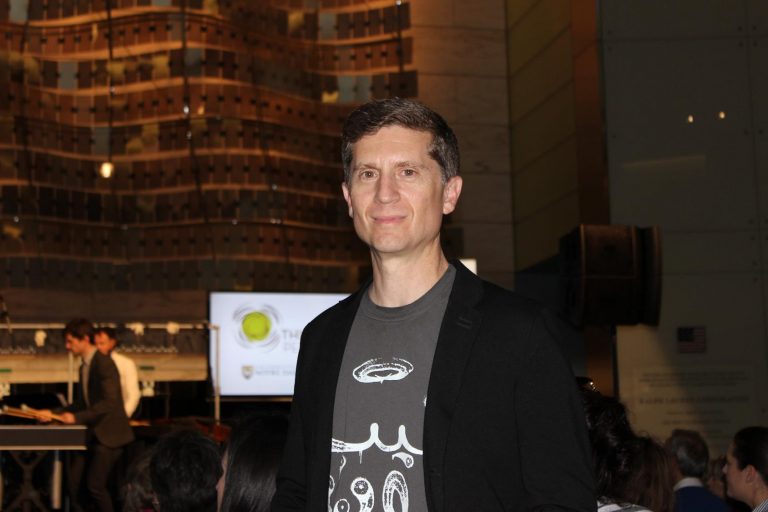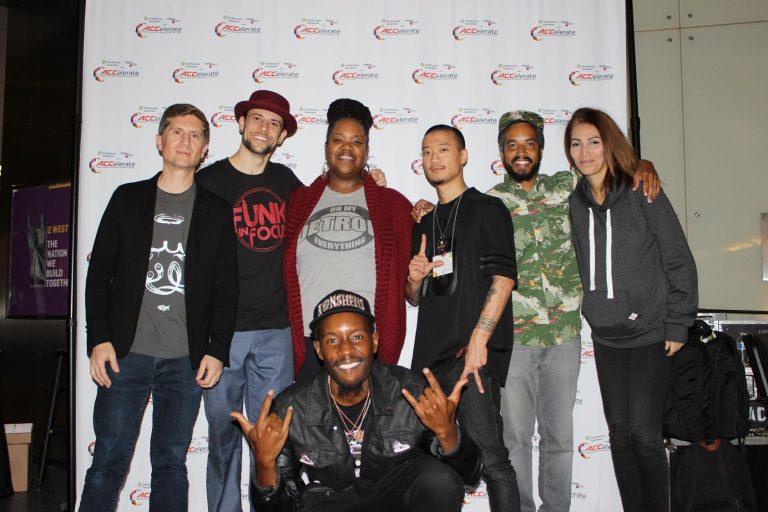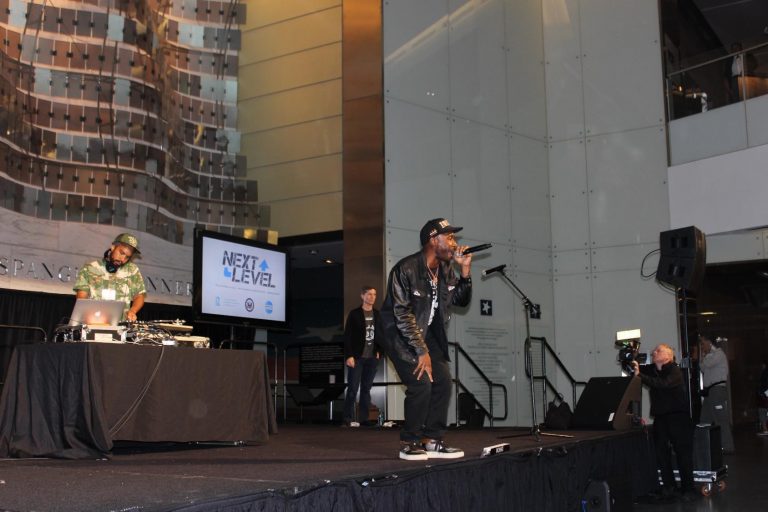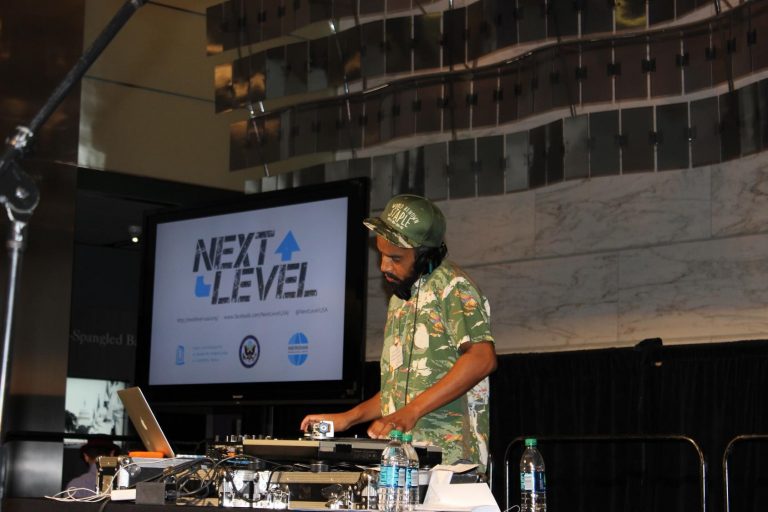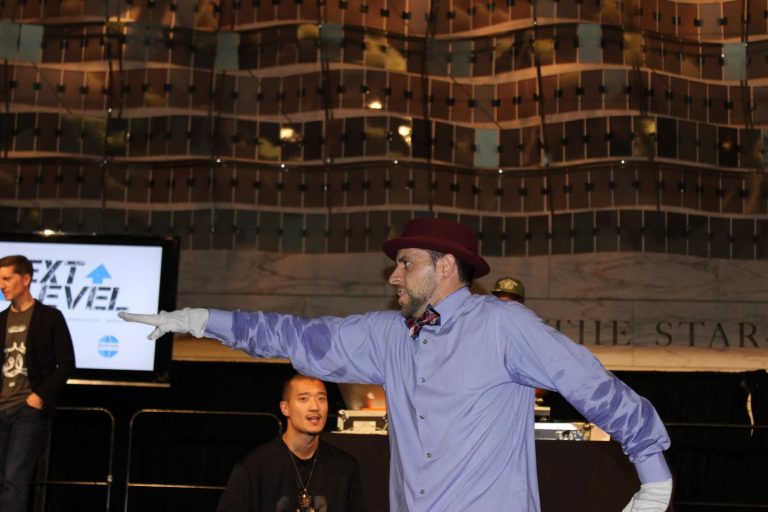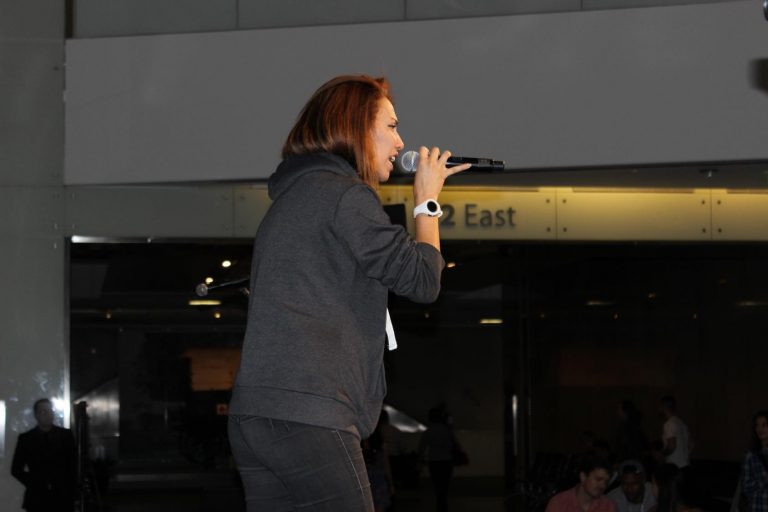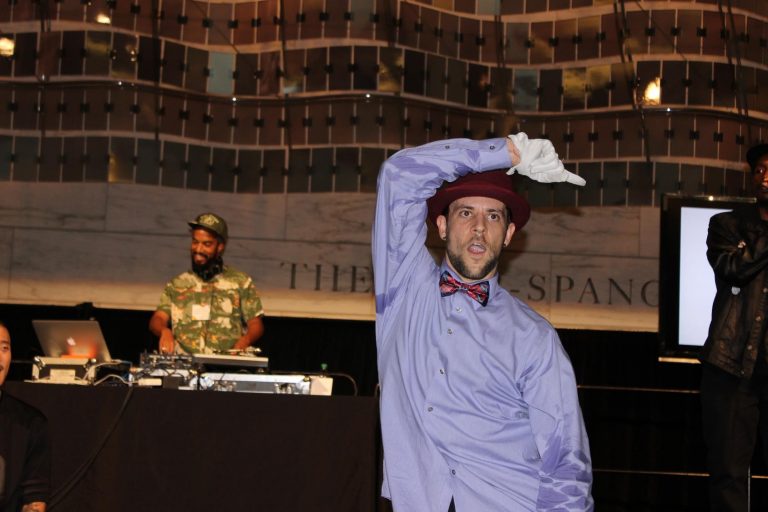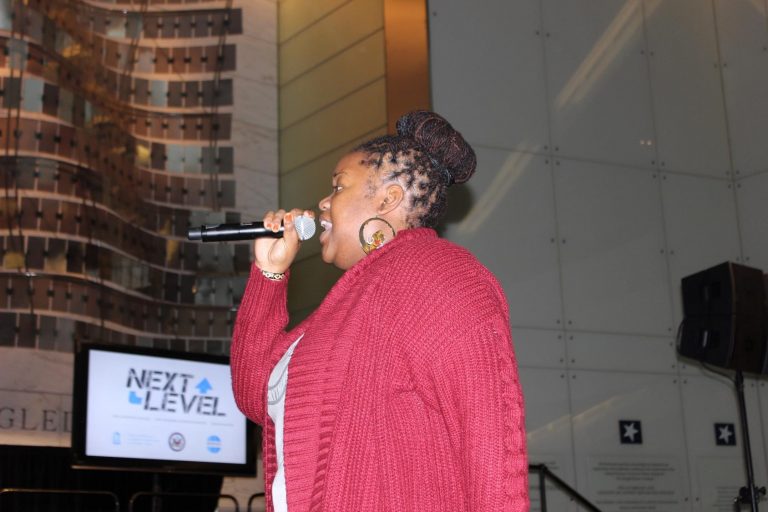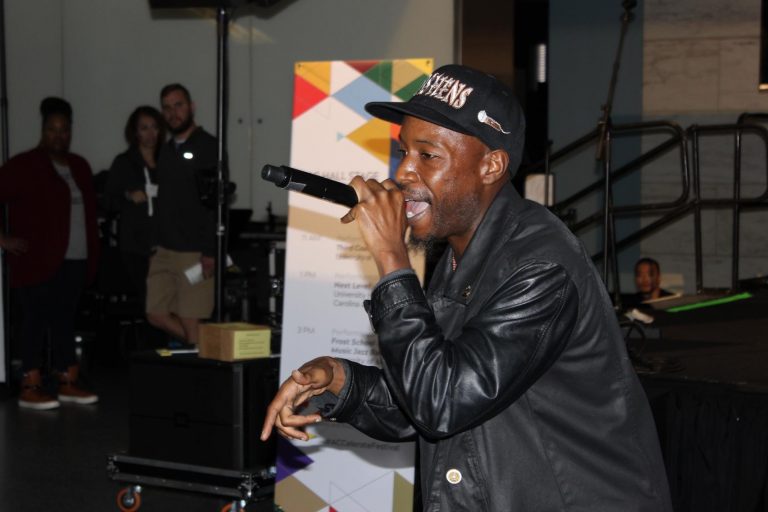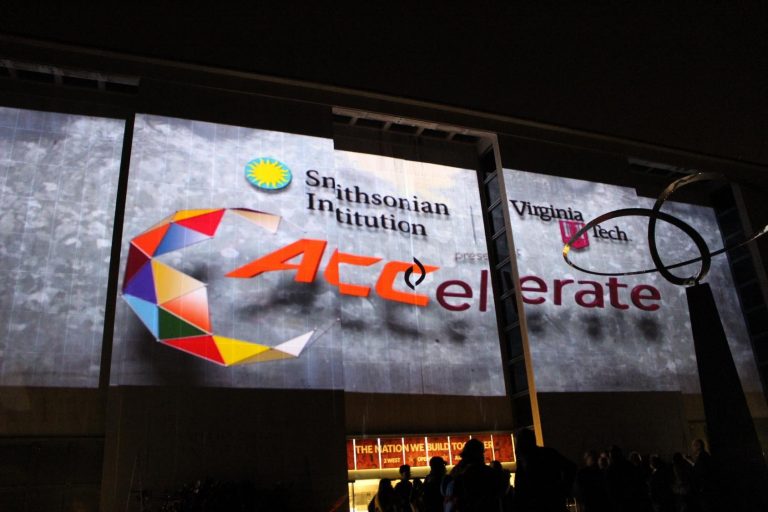Photoblog: UNC brings innovative spirit, cutting-edge exhibits to Smithsonian
NOTE: Send your proposals for UNC exhibits or performances at the 2019 ACCelerate festival to innovate@unc.edu.
Published Oct. 21, 2017
One might say that there is no place more appropriate to celebrate innovation than Washington, DC. After all, the city represents a country founded on revolutionary ideas that, once put into practice, created a nation like no other. Where better to focus on innovation than the capital city of a country that is an innovation itself. That’s the pervasive spirit behind the ACCelerate Creativity and Innovation Festival, where UNC-Chapel Hill faculty, students and staff gathered with the 14 other universities in the Atlantic Coast Conference to deliver performances, engage in discussions and present 48 interactive exhibits at the Smithsonian National Museum of American History.
15 Atlantic Coast Conference schools
48 interactive faculty and student exhibits
5 UNC innovation exhibits, performances and discussion panels
200+ interconnected innovation leaders and programs across campus
475 UNC-affiliated startup companies tracked since 1958
54 research centers and institutes attracting top faculty and $492M in annual funding for scientific research
40,000+ lives improved by UNC social ventures since 2013
Led by the Office of the Vice Chancellor for Innovation, Entrepreneurship and Economic Development, the UNC delegation represented some of the most cutting-edge Carolina-born ideas at a festival intended to celebrate creative exploration and research across science, engineering, the arts and design. Carolina faculty, students and staff participated in several exhibits, performances and discussions featuring work across several different UNC innovations:
Exhibit: Advanced Manufacturing in the New Economy
–Professor Joe DeSimone’s work in additive manufacturing at his company Carbon uses light and oxygen to grow manufactured parts and fabricate products 100 times faster than the current industry standard.
–Student non-profit Feelin’ DNA creates 3D-printed models to help visually impaired students learn about science.
–Nanotechnology for drug delivery relies on additive manufacturing of tiny structures to target medicines to tumors or micro-needles for painless transfer of medicine via the skin.
Exhibit: Simulations and Machine Learning in Pharmacy
–The UNC Eshelman School of Pharmacy’s use of serious gaming concepts enhances all phases of education and pharmaceutical research. Its nXhuman learning platform lets pharmacy students learn and practice interacting with virtual patients in an immersive environment before working with human patients.
Exhibit: Using Cognitive Intelligence and Machine Learning to Fight Cancer
–UNC Lineberger Cancer Center’s research study with IBM Watson allows it to quickly analyze information from millions of medical papers that could be potentially relevant for individual patients based on their personal genetics.
Performance: Beat-Making with Next Level
–Mark Katz, director of the UNC Institute for the Arts & Humanities, runs Next Level, an organization that collaborates with communities all around the world to use the art of music to communicate, teach and inspire. This performance featured beat artists, rappers, dancers and DJ’s interacting with the audience to create music that they employ in cultural exchange workshops around the world.
Discussion: What Is Creativity and Innovation?
–Theo Dingemans, professor of applied physical sciences, participated in a panel discussion that explored questions like: How does making relate to creative and inventive initiatives at research universities? What is the role of making in helping to break down silos between different scientific disciplines, the arts and social endeavors? How are today’s students using makerspaces to find solutions to real-world problems?

 | UNC-CH
| UNC-CH
